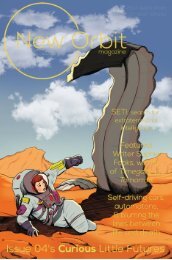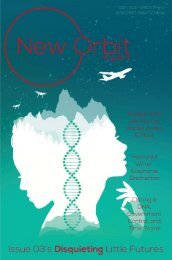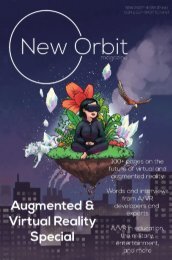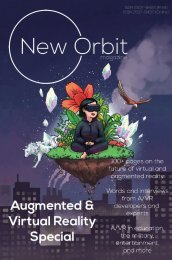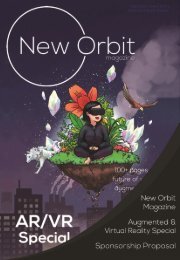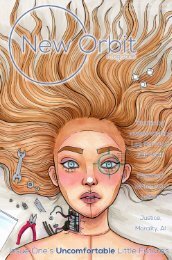New Orbit Magazine Issue 08; Feb 2020, The Future of Animals
- No tags were found...
Create successful ePaper yourself
Turn your PDF publications into a flip-book with our unique Google optimized e-Paper software.
The process doesn’t only apply to pets,
either. A large group of animals with
identical genetics makes for an ideal control
group in research, to rule out outliers with
strange behaviours due to heritable traits.
Service dogs might be replicated with an
aptitude for certain important abilities,
racehorses can continue on genetic lines with
greater purity, and captive endangered
species could be cloned to help boost wild
populations, and increase their genetic
diversity out in the world.
American Veterinarian representative
Kerry Ryan highlights another interesting
outcome of commercially cloned animals:
– American Veterinarian, Pet Cloning: Where We Are Today.
The cloning process itself hasn’t changed a
great deal since its inception in the mid- to
late-90s. Sample cells are surgically extracted
from a (usually, but not always, living) donor.
A tissue sample of only a few square
millimetres is required, usually collected
during an unrelated surgical routine
procedure in which they are put under
general anaesthetic.
Then, an unrelated female dog has her
unfertilised eggs surgically harvested from her
fallopian tubes. The nucleus of an egg is
removed with a very fine pipette, turning it
into a genetic clean slate that the DNA of the
donor can be inserted into. And this is what
they do; the nucleus from a viable cell
collected from the donor is inserted back into
those empty eggs, and fill the void left by the
female dog’s DNA. A quick electric burst
fuses the two unrelated parts into a new,
single cell – the donor’s DNA is now part of
the egg, and will theoretically grow into the
embryo of the clone puppy we’re waiting for.
Rather than fertilisation with sperm, which
is not needed as the egg already has a full set
of genetic information from the donor, the
fusing electrical burst also jumpstarts the cell
division. Once this is observed, a couple of
days after the fusing, the egg/s are surgically
implanted into the surrogate that, with any





